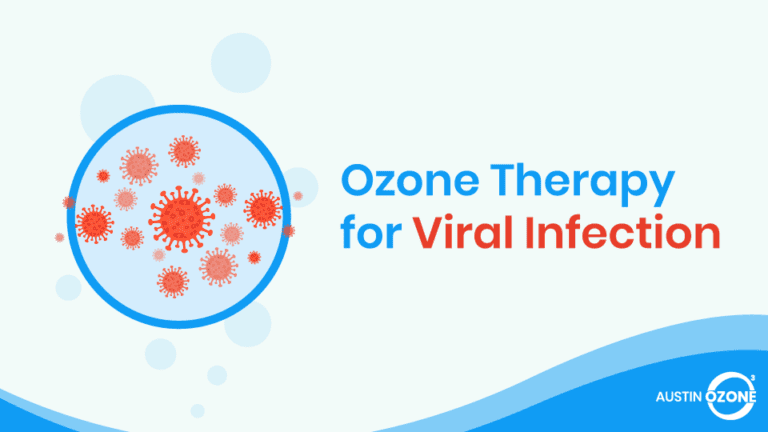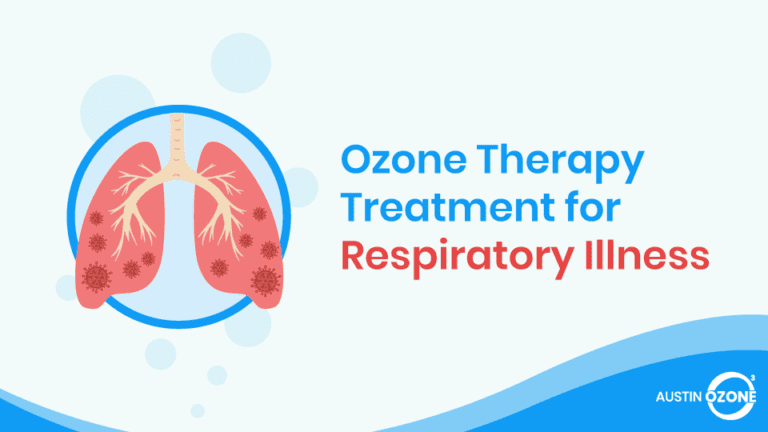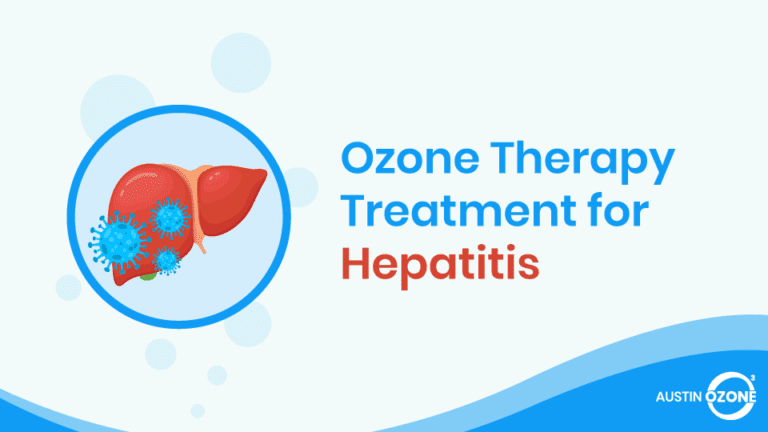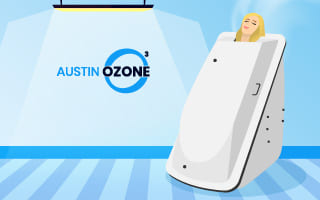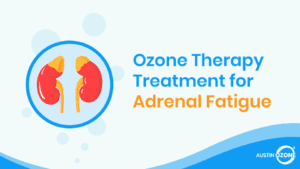A viral infection1 is a state where the human body is invaded by a pathogen known as a virus. Viruses can infect any part of the body – from the skin to the brain.
Depending on the strength of an individual’s immune system, some infections can be easily fought off, while others need to be medically treated. The danger caused by viruses shows the need to have various and effective forms of treatment for them.
What Are Viruses?
A virus1 is surrounded by either a protein coat, glycoprotein, or fat and requires a host to thrive and multiply. It is considered the most abundant microscopic organism on the planet, so it is easy for humans to be infected by them.
People may get a viral infection1 through ingestion, inhalation, sexual contact, or from being bitten by insects. As such, most viral infections occur in the gastrointestinal, respiratory (nose, throat, and upper airways), reproductive, and nervous system. Their symptoms may range from asymptomatic to severe.
Once there is an infection, the virus needs to attach itself to a host cell to replicate. The infected cell either dies or mutates with the virus, with the latter ultimately hijacking control over the former. For the most part, viruses infect only a particular type of cell.
Bacterial Vs. Viral Infection: What’s the Difference?
For an ordinary person, a bacterial and viral infection almost seem synonymous. After all, both are caused by pathogenic organisms; they commonly spread through coughing and sneezing; and their symptoms can range from mild to severe.
However, bacteria and viruses are widely different in terms of the type of pathogen that infects your body. Strains of bacteria are largely one-celled organisms that can reproduce on their own, while viruses need to latch themselves to a host to live.
Most bacteria are completely harmless and can even help in certain processes like digestion. In terms of size, viruses are much smaller than bacteria.
It can be difficult to determine whether your infection is viral or bacterial, so your physician needs to conduct a series of tests. Distinguishing the cause of your infection is important since the treatment for bacterial infections is very much different from that for viral infections.
Types of Viral Infection
There are various forms of viral infections, and here are some of the most common ones:
Skin Infection
Since the skin is the largest organ in the body, it is the one most prone to getting an infection. Examples of viral skin infection include chickenpox, shingles, measles, warts, and hand- foot-and-mouth disease.
Gastrointestinal Infection
More commonly found in developing countries, gastrointestinal infections are said to be the leading cause of death among children under 5 years of age. Even though bacterial gastrointestinal infections are not unheard of, those that cause diarrhea and gastroenteritis are often viral.
Respiratory Infection
This type of infection affects the lungs, airway, throat, and nose. Even before the prevalence of COVID-194, respiratory infections have been known as the leading cause of mortality and death around the globe.
They can infect people of all ages, but they are more likely to cause severe symptoms among infants, children, and seniors. Examples of a respiratory infection include coronaviruses, sinusitis, common cold, influenza, and pneumonia.
Reproductive System Infection
Sexually transmitted diseases (STDs) are often passed through sexual contact (vaginal, anal, and oral), but it is also possible for them to spread through close body or skin-to-skin contact. Examples of the STDs caused by viruses are hepatitis, herpes, and human papillomavirus (HPV).
Infection on the Nervous System
It is said to be the most serious type of viral infections since it affects the brain, the spinal cord, and the membrane surrounding them. The symptoms of a viral central nervous infection often start with a change in mood, irritability, headache or neck pain, refusal to eat, and seizures. Examples of this type of infection include encephalitis and meningitis.
Unlike other viral infections, this infection cannot be treated using antiviral drugs. Instead, supportive care2 is necessary for the infected patient to live normally.
Animal to Human Virus Transmission
Disease can transmit between species1, usually from animals to humans, through close contact. An example of this type of virus is the Severe Acute Respiratory Syndrome Coronavirus (SARS-CoV), which originated from civets (cat-like mammals) found in China.
Another example is the Middle East respiratory syndrome coronavirus (MERS-CoV), which came from camels.
A more common example of a virus transmission from animals to humans is rabies1, which can be transmitted through animal bite. The virus affects the central nervous system and is fatal to those who are infected.
How Viral Infections Are Diagnosed?
Multiple laboratory diagnosis methods are often applied to determine a viral infection. A laboratory can do an antibody test and viral antigen detection test to determine if your body is infected with a specific type of virus.
The human body is capable of fighting off viruses on their own with antibodies1, a substance produced by the body’s immune system; it is designed to fight and destroy viruses. Like antibodies, antigens also attach themselves to the virus’ surface. If an antibody or antigen is found in the patient’s sample, then it is likely that the patient is infected with a virus.
Other tests include a viral culture and a viral DNA/RNA detection test. For viral detection, samples can be extracted from different parts of the body. These can include the blood, stool, urine, organ tissue, saliva, and spinal fluid.
Ozone Therapy for Viral Infection
With the increased demand for treating various forms of virus infections, ozone therapy has become a trusted method.
While ozone gas6 is known as an atmospheric layer protecting the planet from the harmful effects of ultraviolet rays, it is also used in the medical field as a powerful disinfectant.
Medical grade ozone is produced by running pure oxygen through an ozone generator, after which it is introduced to the body.
With the increased demand for treating various forms of virus infections, ozone therapy has become a trusted method.
The dosage and frequency5 of administration wholly depend on the type of viral infection. Usually, central nervous viral infections require high dosages3 to kick-start the immune system.
Those who opt for a direct injection of ozone, either intramuscular or intravenous, would require medium concentrations, since high concentrations may result in the ‘crimping’ of the red blood cells.
Schedule an Ozone Therapy Session Today!
How Ozone Works?
With its main function in disinfection, medical ozone7 is capable of disrupting the fat, glycoprotein, or the protein coating of viruses. This in turn disrupts the virus’ reproductive cycle and makes it harder for them to replicate.
At the same time, ozone disrupts the virus-to-cell attachment through peroxidation. The weak cells that the virus attached itself to are effectively eliminated and replaced with much healthier cells.
Other than disinfection and peroxidation, medical ozone can also strengthen the immune system9. This happens through a series of complex bodily functions such as the cleaning of the lymph system, which boosts the body’s immunity against viral, bacterial, and fungal attacks.
Ozone Therapy Against COVID-19
More recent studies4 are focusing on the efficacy of ozone therapy against the deadly threats of COVID-19. Multiple countries are now using ozone therapy as a complementary treatment of this disease, with varying degrees of success.
These countries include China, Spain, Italy, and some parts of the United States. These reports8 state the need to study ozone therapy as a form of treatment for COVID-19, given the many benefits it can provide the immune system and its ability to eliminate various infections.
Summary
Viral infections are caused by tiny organisms known as viruses. Not all viruses are dangerous to human health, but the majority of their species can cause a variety of illnesses and diseases, with symptoms that can range from asymptomatic to severe.
Because of their abundance in nature, viral infections can be transmitted through a number of ways, including swallowing, inhaling, close body contact (i.e., sex), and animal-to-human transmission.
Ozone therapy is considered one of the more effective ways of managing a viral infection.
Unlike bacteria, viruses need a living tissue to thrive and survive. Viral infections are also more difficult to treat. More often than not, they cannot be treated by simply taking antibiotics or antiviral drugs.
The best way to prevent a viral infection is through a vaccine; otherwise, supportive care is needed to manage it.
Ozone therapy is considered one of the more effective ways of managing a viral infection. However, the mode of administration, dosage, and frequency depend on the severity and type of the viral infection. It can also be used as preventive treatment by destroying the virus even before it can attach itself to the host cell.
Schedule an Appointment Today
References
- Crosta, P. (2017, May 30). What to know about viruses. Retrieved from https://www.medicalnewstoday.com/articles/158179
- Imperiale, C., Morselli Araimo, F., & Tordiglione, P. (2019). Pain relief in viral infections. What role does ozone play? [abstract] Proceedings of The World Conference on Ozone Therapy in Medicine, Dentistry and Veterinary. Ancona (Italy). September 22nd – 23rd – 24th , 2017. Journal of Ozone Therapy, 3(4), 28. doi: 10.7203/jo3t.3.4.2019.15509
- Maderis, T. (n.d.). Ozone therapy for Lyme disease. Retrieved from http://drtoddmaderis.com/ozone-therapy
- Martinez-Sanchez, G., Schwartz, A., & Di Donna, V. (2020). Potential Cytoprotective Activity of Ozone Therapy in SARS-CoV-2/COVID-19. Antioxidants (Basel), 9(5), 389. doi: 10.3390/antiox9050389.
- Medozons. (n.d.). Ozone therapy in the internal medicine. Retrieved from https://medozons.com/ozone-therapy/different-fields/internal-diseases
- Peripheral Neuropathy Treatments. (n.d.). Ozone and related articles – FYI. Retrieved from http://peripheralneuropathytreatments.com/neuropathy-ozone-articles.htm
- Poscia, R. (2020, April 28). Oxygen-ozone as adjuvant treatment in early control of COVID-19 progression and modulation of the gut microbial flora (PROBIOZOVID). Retrieved from https://clinicaltrials.gov/ct2/show/NCT04366089
- Rowen, R., & Robins, H. (2020). A plausible “penny” costing effective treatment for corona virus – ozone therapy. Journal of Infectious Diseases and Epidemiology, 6(2), 113. doi: 10.23937/2474-3658/1510113
- Shallenberger, F. (n.d.). FIBROMYALGIA. Retrieved from https://www.antiagingmedicine.com/conditions/fibromyalgia/
